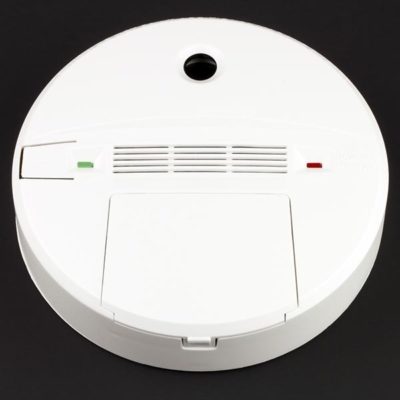If your home uses a gas-powered furnace or other appliances, you should take precautions to prevent carbon monoxide.
Often referred to as the “silent killer,” carbon monoxide is a serious safety hazard for homeowners and their family members. According to the U.S. Centers for Disease Control and Prevention (CDC), it’s responsible for over 400 accidental deaths in the United States each year.
While carbon monoxide is both odorless and tasteless, there are ways to prevent it from building up inside your home.
Use Carbon Monoxide Detectors
Even if your home has smoke detectors, it may not have carbon monoxide detectors.
Smoke detectors, of course, are only designed to detect smoke. If there’s a fire, they’ll trigger a loud audible alarm so that you and your family members can escape.
Carbon monoxide detectors, on the other hand, trigger an alarm in response to carbon monoxide. When carbon monoxide accumulates, the detectors will sound an alarm.
For each floor in your home, install at least one carbon monoxide detector. Additionally, you should test all the carbon monoxide detectors used in your home on a monthly basis.
Like smoke detectors, carbon monoxide detectors consume power from batteries. If the batteries are dead, the detector won’t work.
Keep Your Chimney Clean
A dirty chimney can lead to carbon monoxide in your home.
Over time, soot will build up along the walls of your chimney. As the soot accumulates, it will essentially create a narrower exhaust path through which the heat, as well as gas, produced by your fireplace, is vented.
Therefore, building fires in your fireplace will cause carbon monoxide to enter your home’s interior rather than being vented out through the chimney.
By keeping your chimney clean, the byproduct gases produced by your fireplace – including carbon monoxide – can safely escape your home.
Get Your Furnace Inspected
If your home uses a gas-powered furnace, you should consider getting it inspected by a professional heating, ventilation and cooling (HVAC) technician.
Gas-powered furnaces typically have a lower operating cost than their electric counterparts. If a gas-powered furnace leaks, however, it will release carbon monoxide into your home’s interior.
An HVAC technician can inspect your home’s gas-powered furnace for leaks and other forms of damage. If there’s a leak, he or she can fix it so that it doesn’t cause carbon monoxide to build up inside your home.
If you are experiencing a problem with your air conditioning or heating call us at 512-336-1431 to schedule an appointment. We’ll be glad to come out and take a look at the issue.
1431-183 A/C & Heating proudly serves Round Rock, Georgetown, Cedar Park, Pflugerville, Leander, Liberty Hill, and North Austin.

